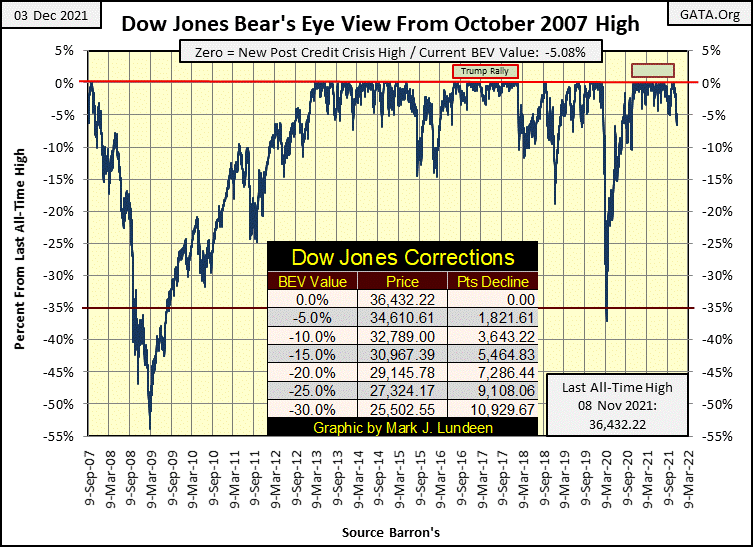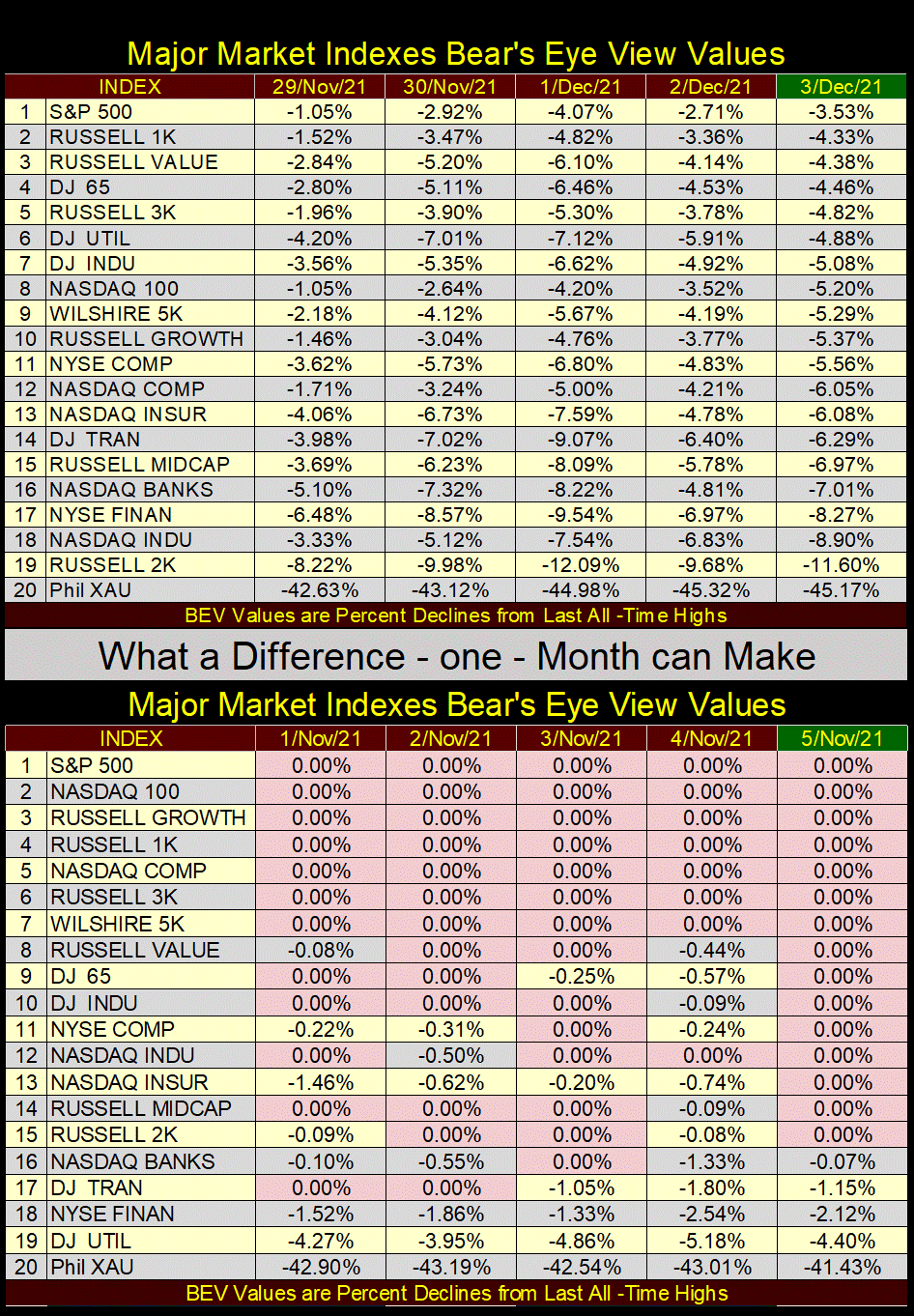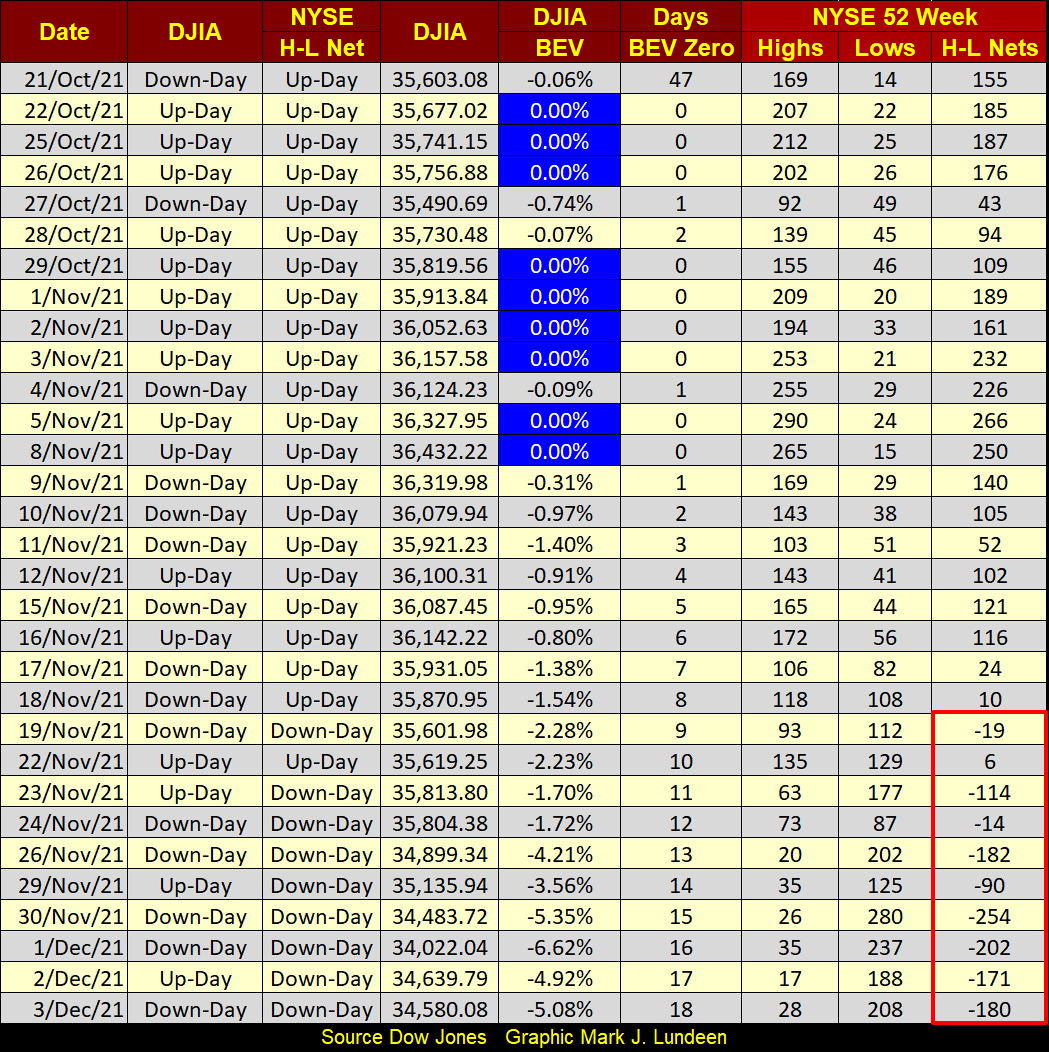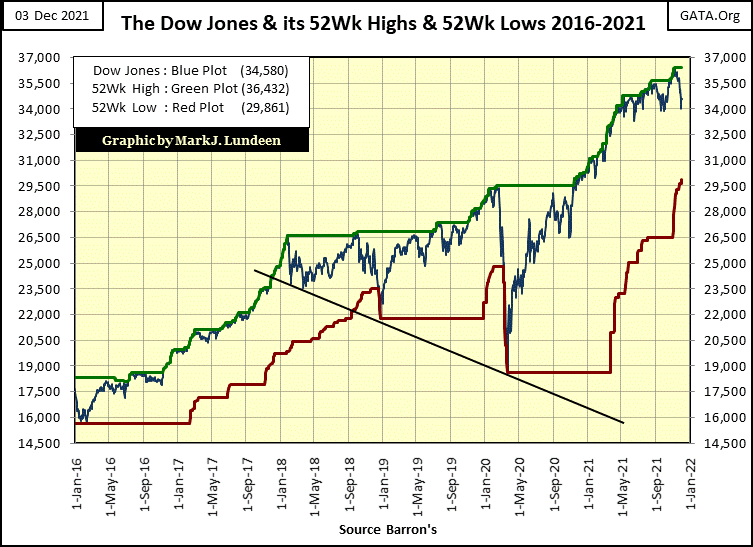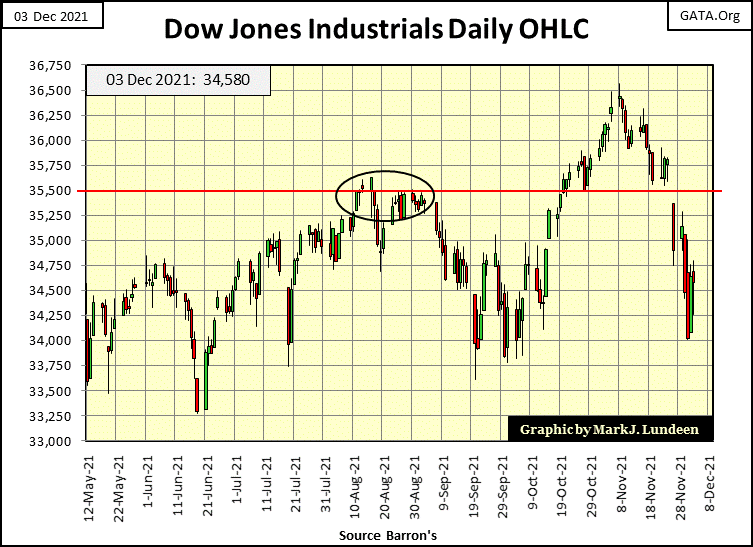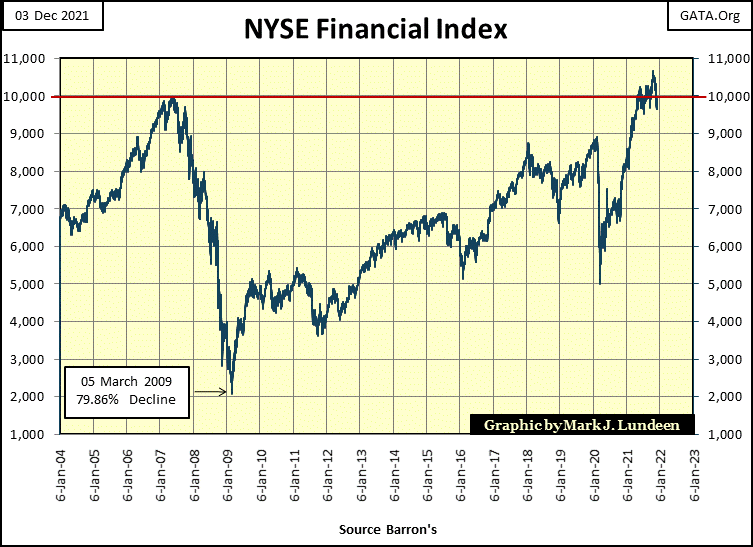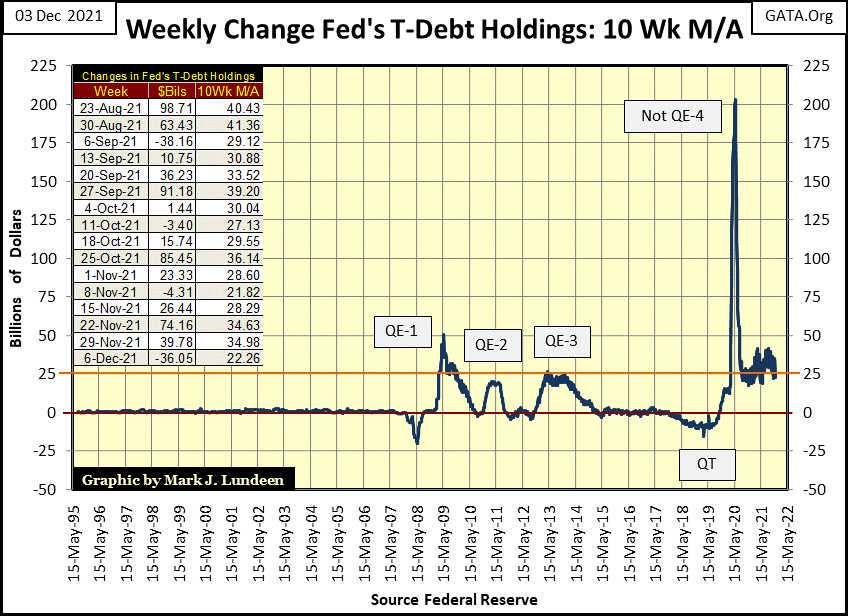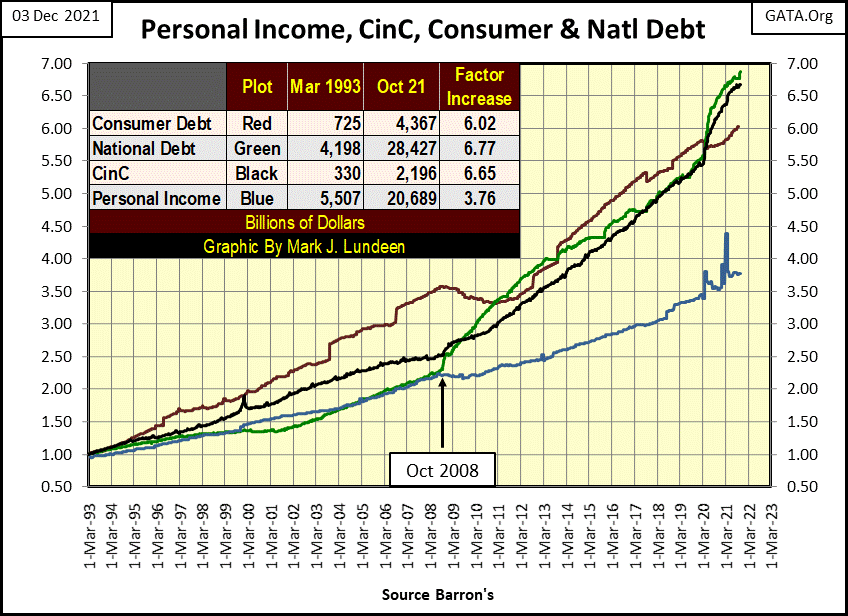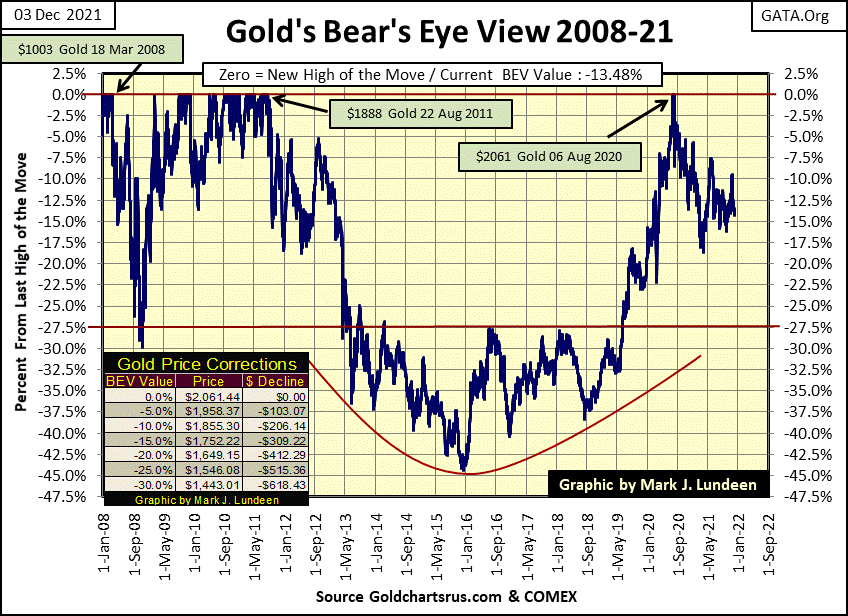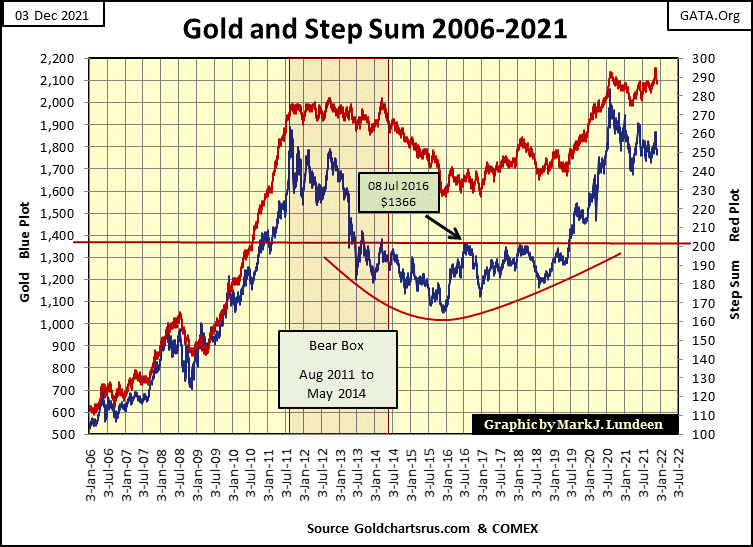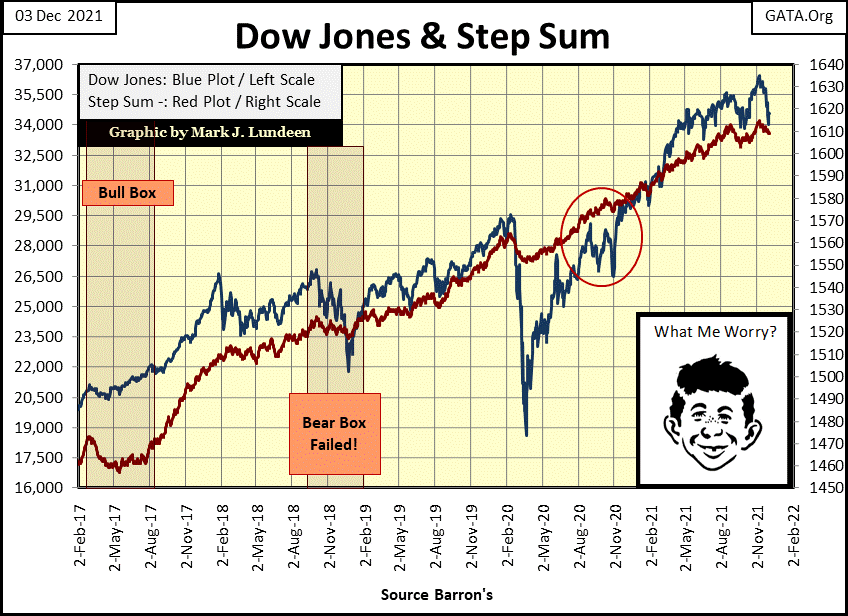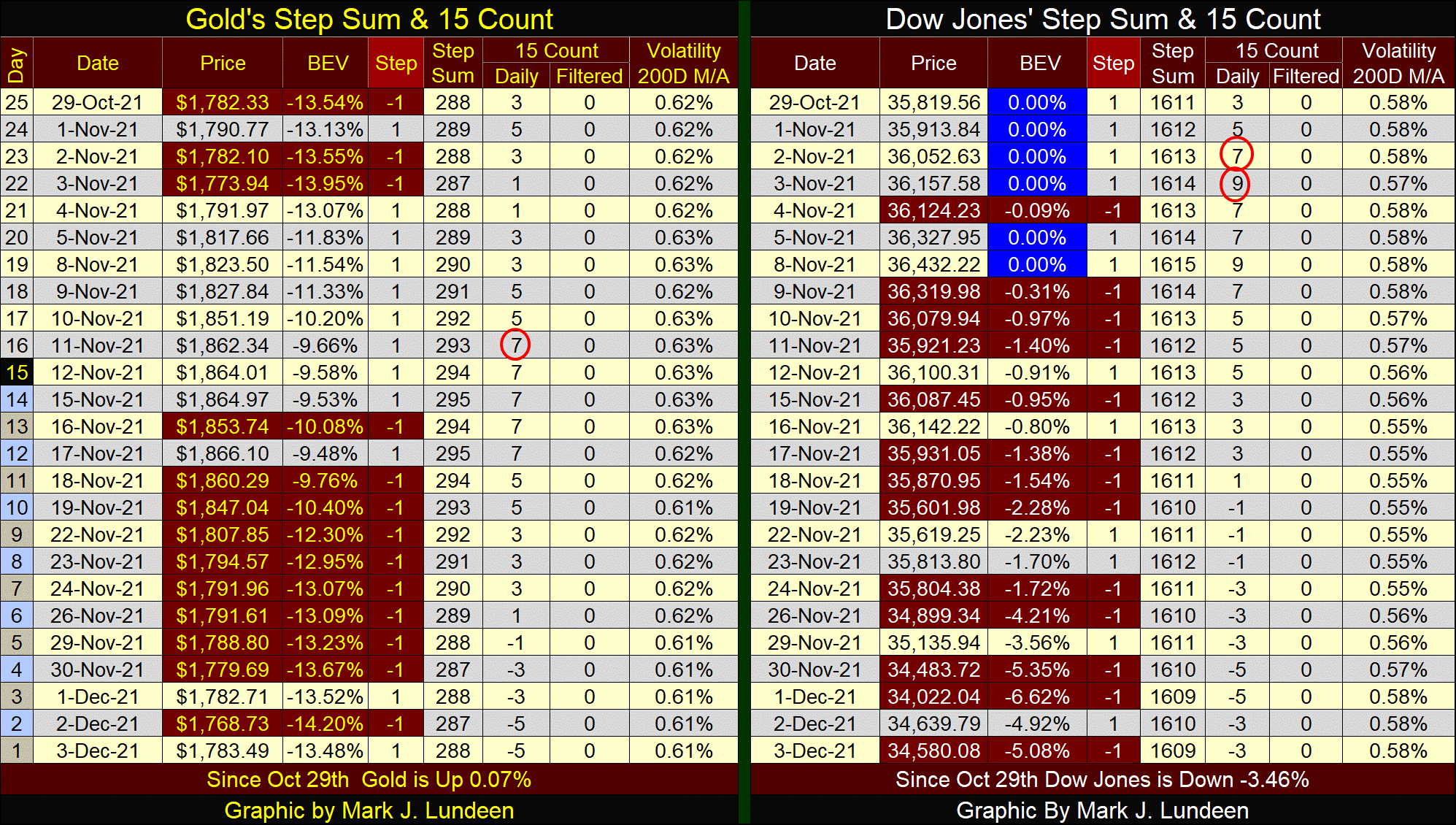Market Update For Early December
This week, the Dow Jones closed below scoring position, more than 5% from an all-time high three times; on Tuesday, Wednesday and again on Friday. This is something that has not happened in the past year; three daily closes outside of scoring position in a single week. Actually, in the past year the Dow Jones hasn’t fallen below scoring position at all.
Does this indicate the highs of the post March 2020 advance are in? Not by itself. There are other factors in the market that would suggest this, but it’s too early for someone to boldly claim the post March 2020 advance is over. But before that becomes evident, your investments in the stock market will most likely be greatly reduced, if in fact the top of this advance is in.
It’s not too early to act as if the top is in, and that is what I recommend; that at the very least to reduce your exposure to this market by raising some cash. With the exception of precious metal assets, sell half your position, and keep the cash on the sidelines for a few weeks, or even to April to see what Mr Bear has planned for the market. Maybe nothing, and then again maybe something big. Now is not the time to become greedy in the stock market.
The Epic Economist below is reporting corporate insiders are selling. I recommend my readers follow Elon Musk’s example, and reduce their exposure to this market. Or even better, just get out and stay out until the Dow Jones deflates by 40% or more, as the time to get greedy in the stock market is at market bottoms, NOT market tops.
https://www.youtube.com/watch?v=GMGiGW5MKC4
Next is my Major Market BEV values table. But this week I placed it with the one I used in my first week of November’s article. Quite a difference in the two, the upper and lower tables. A month ago there were sixty-two new all-time highs of a possible one-hundred in the table. This week’s table saw no new all-time highs, and on Wednesday (December 1st), only four of these indexes closed in scoring position. It has been quite a while, more than a year since we’ve seen anything like this. Yes, what a difference a month can make.
Looking at NYSE 52Wk Highs and Lows below, a disturbing market trend appears to have begun, where 52Wk Lows are overwhelming 52Wk Highs, (see red box in the table below). Currently, there are about 3,500 shares trading daily at the NYSE, so the 52Wk Lows aren’t dominating the NYSE. But, seeing daily 52Wk Highs reduced to double digits, as 52Wk Lows increase to triple digits is to my eyes an omen of coming woe for Wall Street’s bulls.
Let’s look at the Dow Jones with its 52Wk High and Low lines below. The Dow Jones would have to deflate below 29,861 to make a new 52Wk Low, and making a new 52Wk Low is something it hasn’t done since the March 2020 flash crash. That would be a 21% reduction from its last all-time high. Of course, that would just be the Dow Jones. Seeing the NYSE 52Wk Lows begin increasing in the table above to the triple digits suggests that a few, or maybe most companies trading on the NYSE have begun their bear market ahead of the Dow Jones.
Next is the Dow Jones in daily bars. Beginning last Friday, it broke below its support at 35,500 like a hot knife through butter. Also, last Friday was the only day of extreme volatility seen so far, taking the Dow Jones down 2.53% from last Thursday’s closing price. Though it looks as if we should have seen more Dow Jones 2% days in the chart below, but so far we haven’t.
If in fact, Mr. Bear is here to do what he does so well (claw back inflated market valuations), we’ll soon see a big pickup in Dow Jones 2% days in the chart below.
So far, we’ve not seen a day of extreme market breadth, a NYSE 70% A-D Day. Though last Friday the NYSE did see a -69.58% A-D Day, just short of breaking the 70% threshold. If in fact Mr Bear is at the door, we’ll soon see more NYSE 70% A-D days than the bulls will care to see.
Below is the NYSE Financial Index going back to 2004. As I said in my last article (two weeks ago), it would be a bad sign to see these financial companies leading the other major market indexes down. Going back to my table of Major Market Indexes above, the NYSE Financial Index is #17 of 20, closing the week with a BEV value of -8.27%, but it almost broke down below its -10% level on Wednesday.
Forgetting the XAU in the table above, only two other indexes have deflated more than these financial companies; the NASDAQ Industrials and the Russell 2000. Should the NYSE Financial Index fall to #19 in the table, and below its BEV -10% level, that would be an omen of woe for the bulls.
So, why in the first week of December 2021 are things becoming bad with the stock market? Because, official level market manipulation by the FOMC can’t continue forever. And for what it’s worth, I believe the post March 2020 advance was purely a “monetary policy” event, an inevitable market reaction to the vast amounts of “liquidity injected” into Wall Street, the Not QE#4 seen below. A multi-trillion-dollar sugar high that reasonable people know can’t last.
But that’s just my humble opinion. The “market experts” at CNN would have us believe the market’s problem is a new, and more deadly variant of the CCP virus that we’re told has broken out, as seen below.
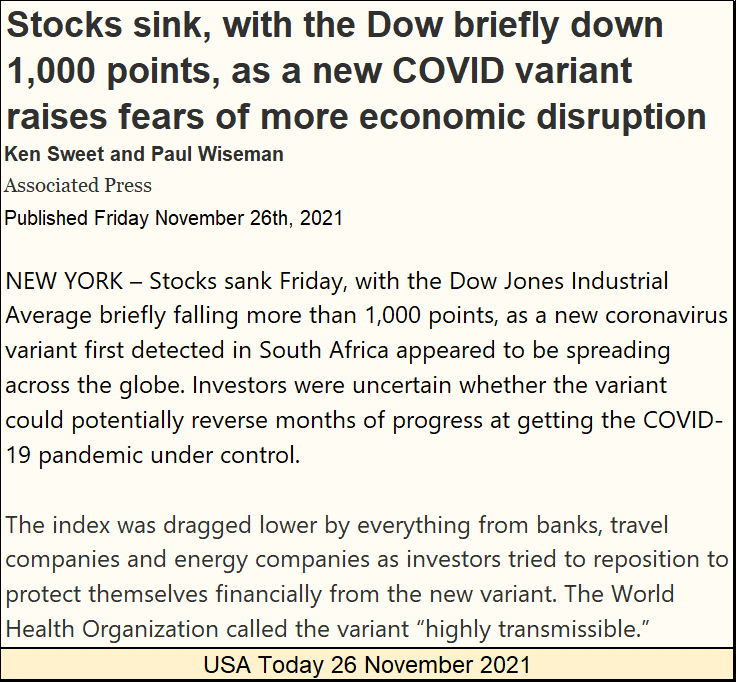
Heck, I thought last Friday’s sell off (November 26th) was due to more sellers than buyers, when actually it was Wall Street catching the flu.
A more believable explanation for our current market difficulties can be seen in the G7 Joint Statement below. I have to say I don’t have a link to this statement’s quote, which I believe to be true. But then I can’t see the heads of two of the world’s biggest central banks just pouring out their innermost fears in a public announcement such as we see below.
One thing for sure, this quote, true or not, does sum up what the “policy makers” have done since October 2019, when they terminated their QT, and begun Chairman Powell’s historic Not QE#4, which fueled the post March 2020 advance. An advance that now appears to be sputtering out.
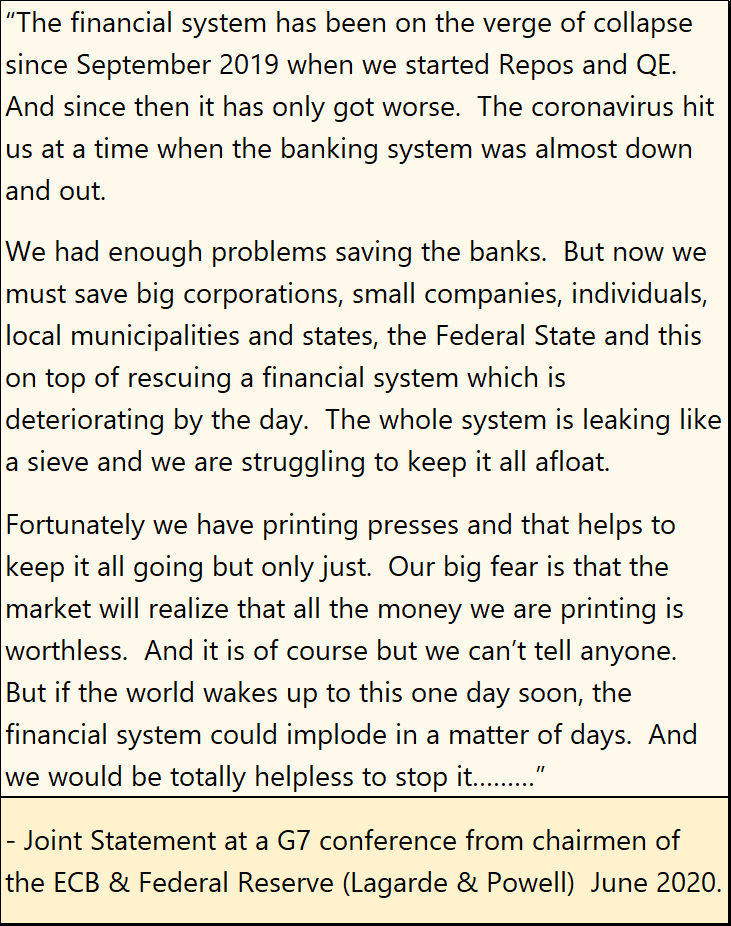
Stepping back a bit, here is the real problem with “injecting” massive amounts of “liquidity” into the financial system to fund a market advance on Wall Street. The post March 2020 market advance is only a sugar high that can’t endure long. While the “liquidity injected” into the financial system endures as debt that must be serviced by an economy, that will eventually be overwhelmed by its debt obligations.
Here’s a chart plotting the indexed values (March 1993 = 1.00) of Personal Income, Currency-in-Circulation (CinC), consumer and the US national debt. Note, with the exception of personal income, the other data series have all increased by at least a factor of 6 while personal income is up by a factor of 3.76.
Here is the problem; it’s personal income that supports the other debt-based series. But seeing personal income fall so far behind, and now receding from its March 2021 highs, is a worrisome development. A development that will have a big impact when Mr Bear returns to reconcile each and every balance sheet in the economy, to a market reality defined by him.
In Mr Bear’s pending market reality, he is going to discount market valuation far below where the “policy makers” have inflated them, and much of the debt now being serviced will be written off completely. This is exactly what he did during the Depressing 1930s, and he’ll do it again. And what is coming our way has nothing to do with the covid virus, or its more deadly variant.
You’ll never hear that on CNN or other outlets of the “mainstream media.” Or see someone speculate that the main reason for Washington to be passing out money, for free to “consumers” is so they continue servicing their debts to the banking system, for fear of what will happen to the banking and financial system should they stop.
What did gold do this week? Well, in early December 2021 gold isn’t making many friends, or so it seems from my daily study of the internet sites I visit. But, as far as I’m concerned, gold remaining above its BEV -15% line in its BEV chart below is a glowing endorsement for gold; its refusal to break below, and then stay below $1752. Since gold’s lows of last April, that has been its story for the past nine months.
Okay, if it makes you feel any better, I think gold’s current market action stinks too. I’m sick of it. But the market doesn’t care what you or I think of what gold should be doing. Sometimes, one just has to be philosophical about things in the market, and deal with the fact that any market can do one of three things, and continue doing them for a long time.
- Go up
- Go Down
- Go nowhere
Right now, gold is going nowhere fast, and has been doing so since last April. Which is a lot better than what gold was doing in early September 2012, on its way to gold’s December 2015 bottom in the chart below.
Like it or not, this is a time for being patient with gold, silver and the precious metal miners.
Gold’s step sum chart below is little changed from a week, or even a month ago. Currently gold is doing little for anyone, be they bull or bear. But looking at the past ten years of market history for gold, and the hard bottom gold hit in December 2015, I remain positive for gold’s future prospects.
And then considering how consumer-price inflation is hitting just about everything these days, this is no time to allow a case of Battered-Bull Syndrome to talk you out of your position in precious metals for of all things; FEAR of falling prices. Come back to me when lettuce and hamburger prices at your supermarket collapse by 40%, and then I’ll discus my concerns of a resumption of a bear market in gold and silver.
If my readers want something to worry about, here is the Dow Jones and its step sum chart below. Should the Dow Jones close below 33,500, Wall Street could become just another bad neighborhood for the bulls.
Though I have to admit I’m still not convinced the top for the Dow Jones is in. The idiot savants at the FOMC are a crafty lot, and they could turn the Dow Jones around, and inflate it to over 37,000. But will they?
Looking at the step sum tables below, both gold and the Dow Jones’ 15-counts became overbought in November, with the Dow Jones actually seeing a +9, a rare market event. Overbought markets are markets vulnerable to selloffs, which is exactly what both gold and the Dow Jones have done. But I sense a difference between the selloff gold has seen, compared to the Dow Jones’ selloff in the tables below.
Beginning on November 18th, gold saw eight consecutive daily declines. Such a large block of down days is something usually seen at the bottom of a bear market, a selling climax marking a bear-market bottom. But gold has been in a bull market since its December 2015 bottom, so seeing its 15-count decline from a +7 to a -5 in just ten trading sessions (table below) is a little odd.
I’d say this selloff in gold actually looks like an act of desperation, especially so when we see how after all those down days, the COMEX goons failed to take gold down below its BEV -15% line. Seeing so many consecutive down days take the price of gold down by only 4.42%, at this week’s close, suggest that the underlying market for gold is actually quite strong.
Over at King World News, Eric King has an interview with Alasdair Macleod who discusses how thing are going in the London gold market; inventories are being squeezed as demand for gold, by the ton, is increasing faster than the system can replenish its supply.
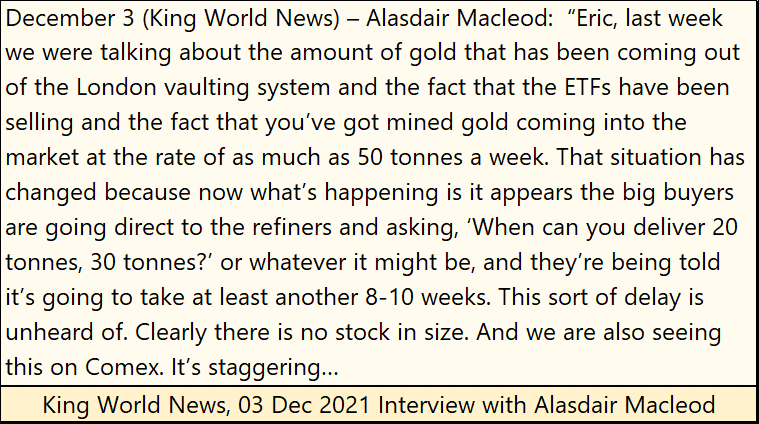
But I remember how since the bull market in gold and silver began soon after 2000, we’ve often seen reports of shortages of bullion at the wholesale level. Maybe this time something bullish will come of it.
The Dow Jones has also seen plenty of selling in November, and these down days in the stock market have had greater impact on the valuation for the Dow Jones than the selling in the gold market.
Daily volatility for both markets remain low, with their daily volatility’s 200-day M/A just a bit above 0.50%. It has been like this for a long time, but they won’t stay low forever. The day is coming when their daily volatility’s 200-day M/A will increase to something above 1.00%. When that happens that should be good for gold and silver, but bad for the Dow Jones.
That’s it for this week. Next week I’m hoping gold remains above its BEV -15% level, as the Dow Jones and the other major market indexes, except for the XAU continue to deflate.
Mark J. Lundeen
********






